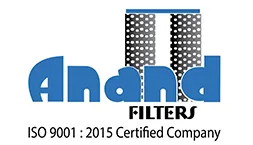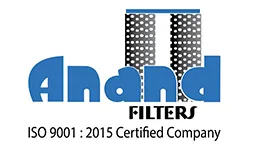
Next-Gen Materials in Filter Bags: Nano-fibres, Aramid, & PTFE Coatings
Pollution has had a detrimental impact on environmental health and has received considerable attention as well. Air pollution poses the greatest threat to the environment, and people have implemented numerous methods to mitigate its increasing impact. Because workplaces and industrial sectors are susceptible to the adverse effects of air pollution, a workable solution is required to maintain control.
In industrial filtration, filter bags are essential for effectively removing dust, particles, and other impurities from liquid and air streams. The materials employed in the manufacture of these filters have a significant impact on their performance. Anand Filters is a reputable and specialized in filter bag manufacturer and pleated cartridge filter manufacturers India.
Evolution of Filter Bag Materials
A filter bag is a type of air pollution control equipment that functions by filtering particulates out of gas streams through a sequence of bags. Filter media with small pores, such as glass fiber, polyester, or nylon, is used to make the bags and catch the particles.
Industries slowly began to request products with longer service life and higher particle retention rates. The increasing demand for high-performance filters has led to the trend for advanced fibers and coatings that provide improved efficiency, durability, and reliability.
Emerging market demand for high-performance filters compels filter bag manufacturers to adopt and deploy new materials and technologies.
Next-Gen Materials Used by Filter Bag Manufacturers
1. Nano-fibres: benefits & applications: A Nanofiber is a synthetic polymer fiber that is frequently encountered with a diameter of less than 100 nanometers and is usually smaller than 200 nanometers. Applying it to the top of the filter media using a spraying technique achieves higher filtration efficiency and better cleaning. A layer of fine fibers resembling a super-fine screen is visible when viewed under a high-power microscope, like a scanning electron microscope (SEM), resting on top of the carrier media or substrate.
Benefits of Nano-fibres in filter bags:
- Easier cleaning: It is quicker and easier to remove dust from the filter’s surface than it is to dislodge it from the media’s depth.
- Energy savings: As a result of surface loading, improved filter cleaning, and the absence of dust in the media depth, the pressure drop across the filter remains low.
- Less maintenance: Easy-to-clean filters provide longer life and longer pressure drop.
Applications: Nanofibers are a new type of material with unique properties that offer numerous opportunities in various industries. Their small size, high surface area-to-volume ratio, and ability to modify specific properties enable numerous nanofiber applications across multiple sectors, including biological, environmental, energy, industrial, and defense.
2. Aramid fibers: High-temperature resistance. Aramid is a type of synthetic fiber material, often referred to as Nomex, used in aramid filter bags. It was made and presented to the public in the 1960s, with DuPont commercializing it in 1967. The most common name for it in filtering applications is Meta Aramid. The synthetic fibers used to make Meta Aramid Filter Bags are highly heat-resistant. They can endure continuous temperatures of up to 400°F (204°C) or sporadic temperatures as high as 464°F (240°C).
Benefits of using Aramid Fibers:
- Longevity of the Filter Bags: Aramid filter bags are very durable and robust. The inherent construction of filter bags, along with their chemical resistance, provides a longer service life, resulting in very less downtime and lower maintenance costs.
- Increased Efficiency of Cleaning: Aramid filter bags feature a smooth, non-stick surface, which enhances the cleaning process and provides increased efficiency.
- Environmental Benefits: Aramid filter bags are both recyclable and environmentally friendly. You can discard them at any time without harming the environment.
3. PTFE coatings: improved filtration and longer life: Polytetrafluoroethylene (PTFE) is a plastic used for the manufacture of Teflon® filter bags. PTFE is a type of synthetic polymer that exhibits high performance and possesses numerous specific properties. It is also hydrophobic, which means it repels water. PTFE also has a low coefficient of friction and is chemically resistant, non-stick, highly temperature-resistant, and more.
Benefits of PTFE-coated filter bags:
- Long Service Life: PTFE filter bags boast a long service life due to their exceptional durability, even in the most demanding operating conditions. It can generate considerable savings over time.
- Easy to Clean and Maintain: PTFE filters are easy to clean and also maintain, which means less downtime and more productive hours.
- Lower Energy Consumption: Teflon filter bags can provide lower total pressure drops across the filter media, thanks to their excellent cleaning properties.
Filter Bag Manufacturers & Cartridge Filters
While many industrial applications will utilize filter bags, cartridge filters are also critical. People commonly use cartridge filters when they require a higher surface area of filtration or need to work within a small footprint.
Cartridge dust collector systems employ fabric filters (or cartridge filters) to remove hazardous dust, particles, and gases from the airstream (and have applications in manufacturing/industry). Over the past several years, there has been a notable increase in the use of cartridge dust collectors.
People also use them to provide general ventilation in large areas, and their high performance makes them widely used in metalworking, plasma cutting, blasting, welding, powder coating, and woodworking.
Cartridge filter manufacturers have also innovated in meeting the demand for high-performance air filtration, partially due to a recent increase in Industrialization.
In India, filtration technology has advanced significantly due to industrial modernization and increased regulations regarding environmental protection. As a result, pleated cartridge filter manufacturers in India have gained momentum through filter technologies that offer a greater surface area, enhanced dust-holding ability, and extended service life.
Applications of Next-Gen Filter Bags
Various industries widely use filter bags because modern materials adapt so well to their needs.
- Power production
- Working with metal
- Production of chemicals
- Food processing
- Production of pharmaceuticals
- Treatment of wastewater
A dependable and efficient method of eliminating particulate matter from gas streams is to use filter bags. Additionally, they are reasonably inexpensive to run and maintain. For cleansing the air, a filter bag functions similarly to a large vacuum cleaner. People use it to clean dust, grime, and other small particles from the air in homes, factories, and even automobiles.
Future of Filter Bag Manufacturing
Analysts project the global filter bag market to reach $3.63 billion by 2030, up from an estimated $2.82 billion in 2025, representing a compound annual growth rate (CAGR) of 5.2%. Increasing emphasis on the workplace safety, environmental sustainability, and industrial pollution control is driving steady growth in the filter bag market.
Additionally, the market is expected to continue its growth as several industries expand, including chemicals, cement, power, and mining. Cost-effective and energy-efficient filtration systems, decarbonization targets, and air quality standards are all contributing to this growth.
Due to the pressure on organizations to reduce particulate emissions, increase energy efficiency, and extend filter life, it seems likely that the development of a variety of filtering media technologies (nanofibers, PTFE membranes, high temperature fabrics, etc.) will remain a large part of that development.
Filter bag manufacturers are developing the underpinnings of more intelligent and more efficient industrial filtration systems through the combination of digital monitoring with the next generation of materials.
Conclusion
As companies become more complex and regulatory constraints tighten, advanced filtering systems are also crucial for operators. An example of innovation that fosters efficiency and sustainability is the use of alternative textiles, such as aramid fibers, nanofibers, or PTFE coatings.
Selecting the appropriate filter bag manufacturer is a key differentiator for organizations seeking to reduce costs, increase operational efficiencies, and comply with sustainability goals.
Also pertinent to the proposed efficiency and sustainability is the role that pleated cartridge filter manufacturers India, and cartridge filter manufacturers more broadly, can play in assuring industries have, for example, alternative options tailored to their functional and operational specifications.

